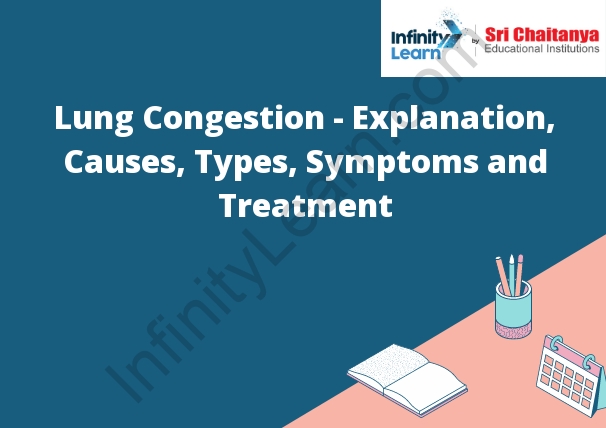Table of Contents
What are Chest Congestion and its Symptoms?
Chest congestion is a condition that results when excess fluid accumulates in the chest cavity. This excess fluid can cause the airways in the lungs to become blocked, making it difficult to breathe. Chest congestion can be caused by a variety of factors, including infection, allergies, and fluid buildup related to heart failure. Symptoms of chest congestion include difficulty breathing, coughing, and wheezing. Chest congestion can also cause a feeling of tightness or pressure in the chest. Lung Congestion – Explanation Causes Types Symptoms and Treatment.
There are two primary types of pulmonary edema: cardiogenic and non-cardiogenic. Cardiogenic pulmonary edema is caused by heart failure, while non-cardiogenic pulmonary edema is caused by other factors, such as infection or exposure to toxins. Symptoms of pulmonary edema include shortness of breath, rapid breathing, and coughing up blood. In severe cases, pulmonary edema can lead to death.

What is Chest Congestion?
Chest congestion is a condition in which the chest feels tight and full, making it difficult to breathe. This is often caused by mucus buildup in the airways, which can be the result of a cold, the flu, or other respiratory infection.
1. Cardiogenic Pulmonary Edema
In cardiogenic pulmonary edema, the heart is unable to pump blood efficiently. This can be due to a heart attack, heart failure, or other heart problems. The blood backs up in the veins, and fluid leaks out of the blood vessels and into the lungs. This can cause difficulty breathing, chest pain, and a cough.
2. Noncardiogenic Pulmonary Edema
Noncardiogenic pulmonary edema is a type of pulmonary edema that is not caused by heart failure. Instead, it is caused by other factors, such as injury, infection, or exposure to toxins. This type of pulmonary edema can be life-threatening, as it can cause the lungs to fill with fluid and make it difficult to breathe. Treatment for noncardiogenic pulmonary edema typically includes antibiotics, if the cause is infection, or dialysis, if the cause is exposure to toxins.
1. Long Term Presence of Edema
Edema is a condition characterized by an accumulation of fluid in the tissues. This can lead to swelling in the hands, feet, ankles, and legs. The long-term presence of edema can cause the affected tissues to become stretched and thin, which can impair the body’s ability to function properly.
2. High Altitude Syndrome
High altitude syndrome is a cluster of medical problems that can occur in people who rapidly ascend to high altitudes, particularly those who do not have time to acclimatize. The problems include headache, dizziness, shortness of breath, nausea, vomiting, and loss of appetite. In severe cases, there may be confusion, hallucinations, and even coma.
How Pulmonary Edema is Diagnosed?
Pulmonary edema is diagnosed by a physical examination and a review of your medical history. Your doctor will listen to your chest with a stethoscope to check for wheezing, crackles, or other abnormal sounds. You may also need the following tests:
Chest X-ray – A chest x-ray can help your doctor see if fluid has built up in your lungs.
Echocardiogram – An echocardiogram uses sound waves to create a picture of your heart. This test can help your doctor see if your heart is pumping blood effectively.
Pulmonary function tests – These tests can help your doctor see how well your lungs are working.
How Congestive Lungs are Treated?
Congestive lungs are treated by treating the underlying cause of the congestion. If the congestion is caused by a respiratory infection, then the person will be treated with antibiotics or other medications to clear the infection. If the congestion is caused by heart failure, then the person will be treated with medications to improve the function of the heart. In some cases, surgery may be required to treat the underlying cause of the congestion.
Lung Congestion – Explanation Causes Types Symptoms and Treatment.









